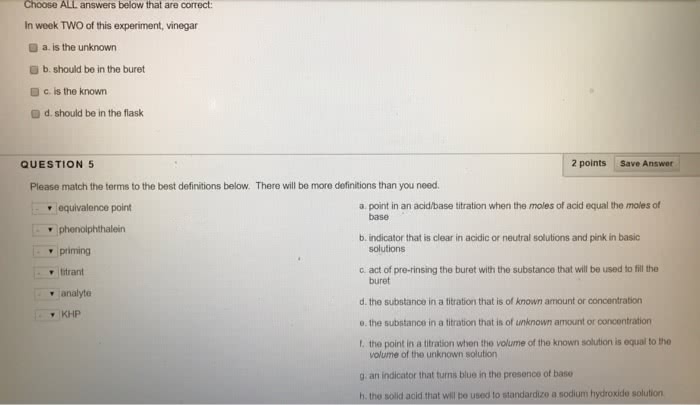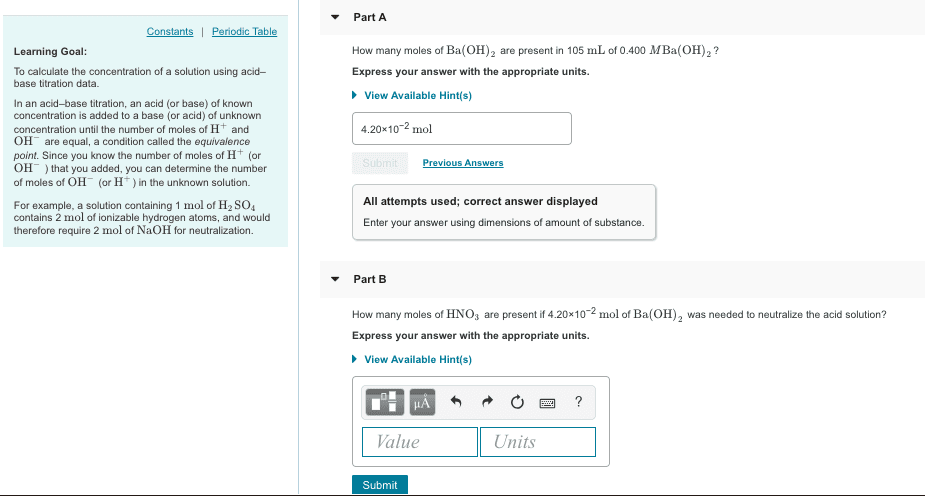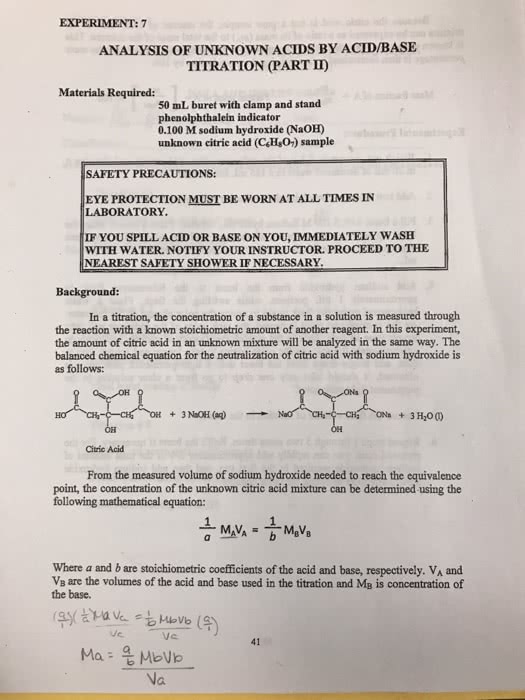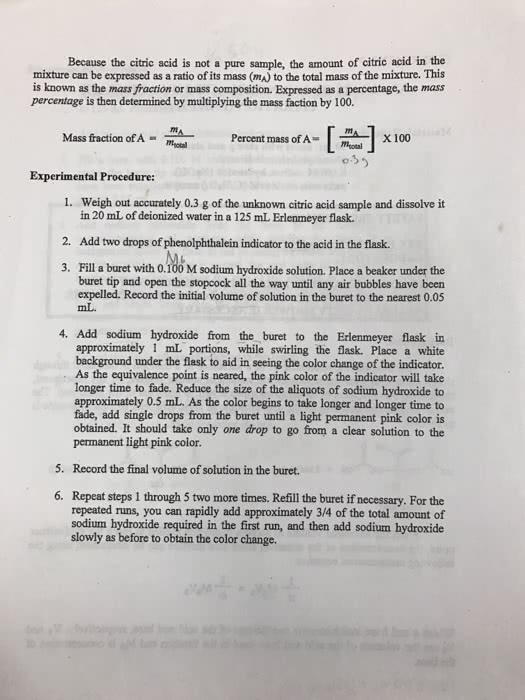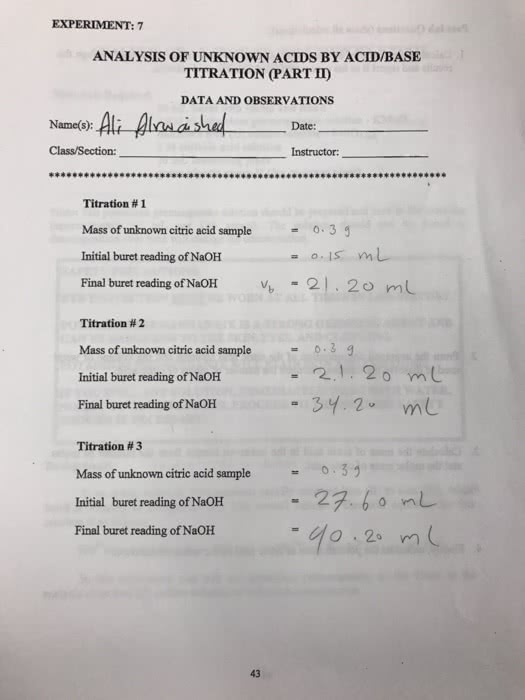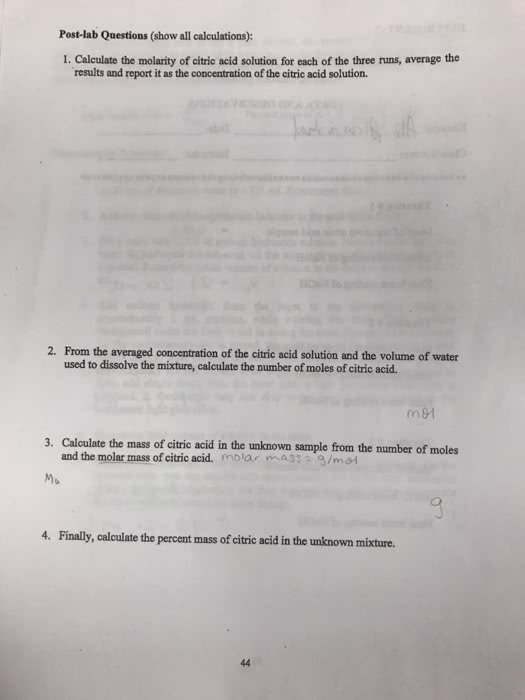CHE-2211 Lecture Notes - Lecture 19: Iron(Ii) Sulfate, Titration, Ph Meter
Document Summary
This method, widely used, is based on an acid-base reaction, also called neutralization reaction, where the analyte, or substance of which we do not know its concentration, interacts, and the substance known as titrant. The term, volumetry, refers to the volume that is used of the solutions used, which allows us to perform the calculation of the concentration that we want to know. This method is not only useful to know the concentrations, but it is also widely used to know the degree of purity of some substances. There are two kinds of titrations, or acid-base titrations, classified into two groups: Alcalimetry: determines the concentration of the base, which has been used with a strong acid of which we know its concentration (titrant substance), this being almost always, hydrochloric acid, Acidimetries: it is used to know the concentration of an acid with a strong base, of which we know the concentration (titrant), such as, for example, sodium hydroxide.


